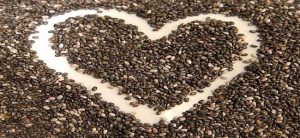Importance Of Eating Seeds On A Healthy Diet
Nutritional Benefits of Seeds All seeds are high in essential fats, which are important in maintaining a healthy body. Essential fatty acids help to burn fat that is stored in our bodies. Flax seeds, chia seeds and hemp seeds rank at the top for omega-3 – an essential fat that is excellent for heart and brain function, which is often lacking in most diets. Hemp seed also has a perfect balance of omega 6 -to- omega 3, which is considered to be optimal by health experts. Seeds are generally an excellent source of protein. Quinoa, amaranth, chia and hemp seeds are particularly noteworthy since they offer complete proteins: meaning that the contain all 9 essential fats required for optimal health. For example, 1 oz of hemp seeds packs 11 grams of protein! Consuming a balance of different seeds in your diet will also ensure a great supply of protein!
Nutrient Dense
As well as protein, seeds a jam-packed with nutrients. Eating a variety of different seeds, over the course of your week, will ensure that you receive a healthy dose of phosphorus, magnesium, selenium, manganese, zinc, iron, copper, B vitamins, vitamin K and anti-oxidant rich vitamin E (and more). All of these nutrients are essential for supporting health on multiple levels.Excellent Source of Fiber
Like most plant based foods, seeds are naturally full of fiber. Fiber is good for blood sugar control, helping to slow the breakdown of carbohydrates and absorption of sugar. It is also great for promoting healthy gut health, good heart health and weight-loss management.Lower Cholesterol and Blood Pressure
Seeds can possess important cholesterol-fighting fibers known as lignans. Flax, chia and sesame seeds contain exceptionally beneficial levels – more than most other foods. Studies also show that this beneficial action from seeds can in turn lower blood pressure.Antioxidant Rich Seeds
All seeds have a beneficial level of antioxidants. Some seeds are absolute powerhouses! Flax seeds, one of the highest rated antioxidants among plant foods, ranks at the top for polyphenols, which are super stars in the antioxidant world.Incorporate Seeds Into Your Diet
Sprouted Seeds
Sprouting seeds tends to make the nutrients more readily available for absorption. Sprouting has the additional benefit of releasing the enzyme inhibitors within seeds making them more easy to digest. If you’re not familiar with sprouting seeds (or nuts and beans), refer to this easy guide from Vegetarian Times. For a quick and easy recipe for sprouted sunflower hummus, head over to Food.com to get the recipe.Seed Paste or Seed Butter
Another great way to speed up the release of nutrients is to enjoy them as a seed paste. In this way, the seeds are still whole (in that they have all of their parts included), although they have been broken down already, making the nutrients easier to absorb. You can easily buy seed butters (i.e. Sunbutter) in health food stores or if you have a food processor, you can even make your own. Tahini is a great example of a delicious sesame seed butter/paste. For an easy recipe for pumpkin seed butter, head over to Just As Delish to grab the recipe.Ground Seeds Added To Smoothies or Treats
Grinding your raw seeds makes for a good salad sprinkle or addition to a smoothie. Again, breaking them down in this way, means that you stand much more chance of absorbing the nutrients locked within the whole seeds. Flax seeds make an excellent choice for grinding and adding to your smoothies. For an easy smoothie, try Apple & Cinnamon Smoothie With Tahini from Trinity’s Conscious Kitchen. Seeds can be added to your favorite treat recipes for a healthy snack! Try this recipe for High Protein Energy Bites from My Whole Food Life! So easy and so healthy! In addition, ground seed (such as flax seeds) can be added into your favorite baked recipe (cookies, muffins, etc).Seeds That Think They Are Grains
Quinoa and amaranth are used as a grains but they are actually seeds! Quinoa and amaranth both contain full essential amino acids. They are remarkably nutritious and can be used as a gluten free ‘grain’ in recipes. For a recipe for Warm Quinoa Medley Salad, head over to Trinity’s Conscious Kitchen.Raw or Roasted
Grabbing a handful of raw or roasted seeds as a snack or sprinkling on top of salads also works a treat too. But remember to chew your seeds well. Any unchewed seeds will just pass through your digestive system relatively whole! So enjoy the process of chewing your food properly to make the nutrients more available. Roasting seeds is easy and you can do it yourself! For a delicious recipe for Cinnamon Coconut Roasted Pumpkin Seeds, head over to Delicious Obsessions for the recipe. Enjoy another recipe for Tamari Toasted Seeds from Trinity’s Conscious Kitchen.Egg Replacers
Chia and flax seeds are commonly used as egg replacers for those who cannot tolerate eggs or have egg allergies. They lend themselves well to the “binding” effect in baking. For more information about how to use chia and flax seeds as egg replacers, see this informative post on Delicioius Obsessions.Making “Granola” or Paleo “Oatmeal”
Many people cannot tolerate grains so seeds are often used in “granola” or Paleo-type “oatmeal” in combination with nuts and dried fruits. These make wonderful options for breakfast! For a delicious recipe for Pumpkin Spice “Granola” that uses pumpkin seeds, head over to Delicious Obsessions for the recipe. Also try the recipe for Paleo Oatmeal from Delicious Obsessions.Making Gel or Pudding
Chia seeds lend themselves to be soaked in milk (coconut or almond milk) to create a gel consistency. Many people enjoy this for a snack. The trick is to let is soak for several hours to allow the “gel” process. For a tasty treat, try the Banana Coconut Chia Seed Pudding Recipe from Slender Kitchen.Seed oil
Seeds make excellent oils, often a little lighter than nut oil. Seed oils offer a great way to get a dose of essential fats in your diet and can be used in salad dressings, marinades and general cooking. Hemp seed oil and sunflower seed oil, are great examples that you might use as part of a salad dressing. A shopping tip: always choose a high quality, cold pressed oil in a dark container (light damages the oil). For a delicious salad dressing, try this recipe for Hemp & Parsley Salad Dressing from Wake Up World.Types Of Seeds To Look For
Seeds are readily available today. Here are some of the most poplular ones to look for:- Sunflower seeds
- Pumpkin seeds
- Sesame seeds
- Flax seeds
- Chia seeds
- Hemp seeds
- Quinoa

